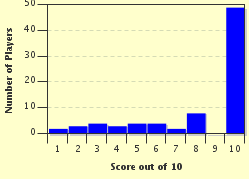Quiz Answer Key and Fun Facts
1. According to legend the city of Rome is founded and Romulus gets to be its first king and was Rome's founder as well.
2. Roman Republic comes into being, overthrowing the Roman Kingdom.
3. Beginning of a series of three wars between Rome and Carthage, known as the Punic Wars, which lasted for more than a century.
4. Roman Republic is victorious in the Third Servile War (Slave Rebellion). Spartacus, the rebel leader, is believed to have died here.
5. Julius Caesar, Consul and later the dictator of the Roman Republic, is assassinated by a group of Roman senators.
6. Most of Rome gets burned in a great fire and Emperor Nero starts the First persecution of the Christians in the immediate aftermath.
7. The Colosseum is opened for the people of Rome for their amusement.
8. Constantine becomes the first emperor of the Eastern Roman Empire, later also known as the Byzantine Empire.
9. Western Roman Empire comes to an end and the Early Middle Ages, also known as the Dark Ages, start in Western Europe.
10. Constantinople is captured by the Turks (Ottoman Empire) which brings an end to the Byzantine Empire also known as the Eastern Roman Empire.
Source: Author
mask100
This quiz was reviewed by FunTrivia editor
bloomsby before going online.
Any errors found in FunTrivia content are routinely corrected through our feedback system.


